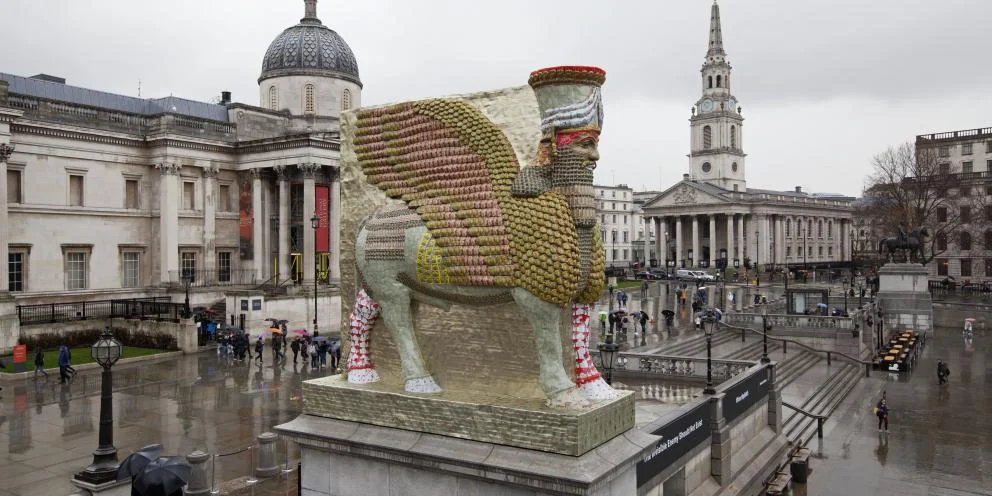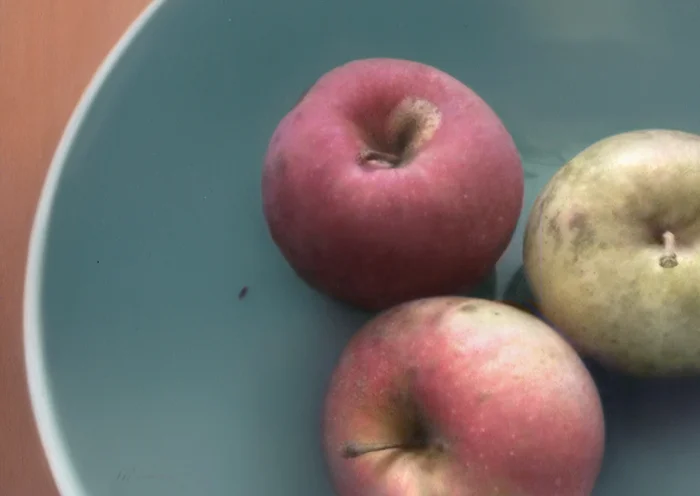Elle Kaye is a taxidermist who specialises birds, preserving their beauty and personality through the traditional art of taxidermy. More commonly associated with the Victorian era, we were very excited to catch up with an artist who is disrupting the field and shifting stereotypes of this art form.
Read MoreFor a long time I had been interested in the human body and how diverse our experiences of having one are. I had been photographing it for a while, trying to abstract it through different techniques, none of which I was very happy with. It was when I took a shot where no arms, legs or head were visible, only a cubic torso, that I felt I was really connecting with something.
Read MoreOccasionally, to engage with art and culture, we have to suspend the faculties of judgement that privilege empirical reasoning and logic. Art asks us to extend our imaginations to truly appreciate a story or a concept. On the face of it, this approach to artwork, which is experientially connected to ideas of child’s play, seems to justify a perception that art belongs at the periphery of social action and identity. Yet, as the works of contemporary Iranian artists, Monir Farmanfarmaian, Shirazeh Houshiary, and Parvis Tanavoli demonstrate, these kinds of encounters can have significant consequences for the constitution of identity, on both an individual and social level . Through each of their practices, these artists have presented visual forms as way to to rethink the value of ambiguity, and possibility in our lives.
Read MoreAnyone remotely familiar with Iran and its culture will know that poetry is an important element of its national identity. The country prides itself on its unique and rich literary history; poetry is woven into everyday life, with quotes from classical poems appearing in casual conversations, fortune telling, and as advice. Many Iranians ¾ from taxi drivers to the founder of the Islamic republic of Iran, Ayatollah Khomeini ¾ write their own poetry, and it is not uncommon for Iranian politicians to reference literary masters in their speeches. And, for a long time, poetry was one of Iran’s main cultural exports.
Read MoreIn the paintings of Sadegh Tabrizi (b. 1939, Tehran d. 2017) and Reza Reinei (b. 1968, Tehran) one finds tradition and modernity, the Middle East and the West, held in dynamic tension. Both artists acknowledge the deep roots of contemporary Iranian culture in the nation’s Persian past, yet they seek to transform this history into something vibrant, vital and living.
Read MoreDefining what it means to be a ‘man’ in Iran is a deceptively complex task. Models for manhood, emerging from history, religion and pop culture, from Cyrus the Great, via Imam ‘Ali, to literary hero Rostam and Olympic wrestler Gholameza Takhti, present a stoic mind combined with a body of sublime muscularity; a paradigm that runs uninterrupted from ancient king to prophet to pahlevan (the Persian term for ‘strongman’). But the reality of Iranian manhood hasn’t always been that straightforward.
Read MoreIn many ways, women dominate the preconceptions that surround Iran. The veil is a constant metaphor that Iranian women are hidden behind both literally and figuratively. Indeed, the whole country is oft personified as a coy lady waiting to be either defended by her own men or disrobed by others: from the Pahlavi-era rhetoric of the motherland to present-day world headlines riffing on some variation of ‘Lifting the Veil on Iran’. ‘Unveiling’ is an all too popular approach to acquainting oneself with the entire region of the Middle East, and by extension its art, something that reached its semantic peak with the 2009 Saatchi Gallery exhibition titled simply ‘Unveiled’.
Read MoreTwenty-two new works are now hung in the shop on Piccadilly scattered between sunglasses and biscuits, hanging above a staircase or peeking through displays of fabric. A limited edition scarf and teapot have been produced as a result of the collaboration. But who are the audiences - and consumers - for this work? Who is Fortnums trying to target? The Queen and aristocrats whose emblems Zhang has simplified to mere marks of Fortnum's green or crude lines memorialising a highland kilt, or the tourists from China who visit the shop to buy tea and biscuits? The new visitors in Hong Kong, who will go to F&M’s first store outside the UK opening before the end of the year?
Read MoreUnlike so much contemporary art, offering moralising social commentary from a safe distance, Rakowitz leverages his artistic practice to probe uncomfortable questions and incite change. . . ‘I make work at the intersection of problem solving and trouble making,’ he says lightly. These inflated, amorphous miniature homes served not only to shield their incumbents from the elements – but to draw attention from passers-by, and on occasion, the cops. In this complex process of simultaneously solving and problematising, Rakowitz isn’t afraid to get his hands dirty.
Read MoreGreat art is often made by morally problematic artists: Caravaggio was famous for his mesmerising use of chiaroscuro, but he was a murderer; Virginia Woolf was a pioneer in modern narrative devices, but she was anti-Semitic; Picasso paved the way for cubism, but he was a misogynist; and Eric Gill may have produced sensual and ‘erotic’ sculptures of the young female form, but he was a paedophile. There is a familiar squeamishness with which viewers engage and approach such works of art: knowing an artist’s biography and general moral character can affect how we interpret and value their works. While it’s true that our reactions to such artworks are frequently sensitive to biographical detail, should they be?
Read MoreJohan Deckmann’s artworks are really riffs: witticisms on contemporary culture and psychology in the form of faux self-help manuals. On their covers are sarky titles such as, ‘How to spend your life with the wrong persons because you are afraid to be alone’. They’re funny, but also provoke some pretty uncomfortable self-analysis. These titles appear on the covers of the books, but just the covers. He’s glued the pages teasingly shut. I suspect there’s another wry comment going on here: that we’ve become pretty facile, obsessed by the surface without any real depth…
Read MoreIn this essay, Anthony Waichulis, a celebrated Trompe L’Oeil painter and co-founder of Ani Art Academies, answers a question often put to him by his students, ‘How do you get your paintings to look so realistic?’ He answers with a question of his own: ‘What does realistic look like?’
Read MoreKerwick’s still lifes are the perfect foil to the quixotic ideals of the artist. He only started painting in 2015, but has risen in truly meteoric fashion and has now exhibited internationally. His paintings seem to prevaricate on the ‘artist’ as a figment of our imaginations. He isn’t scared of utilising old tropes, but makes for some fine self-exposition amid his own painterly equivocation. For by engaging in these tropes, the artist reflexively reveals himself.
Read MoreScientists reckon that 12 million tonnes of plastic are dumped into the world’s oceans every year. We can’t escape the fact that we’re responsible: we’re just too used to ‘single use’ plastics in the ‘waste culture’ of our consumerist lives. We simply don’t think about our lifestyle’s effects on marine life and the ocean. Eliza Hamer and Millie Edwards, who founded the Blue Dot Generation, want to bring the arts to the fight against marine pollution. They say that ‘artists can communicate crucial issues’ and ‘translate the urgency for change’ in ways that others can’t. Join them for an evening with activists, experts, artists and entrepreneurs for ‘Arts for Education’ at the House of Vans, London (26-30 Sep., 2018).
Read MoreCollector Frank Cohen brings the works of John Virtue to Fortnum and Mason, Piccadilly. Virtue paints landscapes on the boundary of the figurative and the abstract.
Read MoreMary Shelley’s novel Frankenstein (1818) portrays an idealistic Dr. Frankenstein who unearths human remains to triumph over death. Paul Cristina’s collaged paintings of corpses make a distinct parallel to this fiction, pieced together and reanimated by the spirit of art while devoid of that spark of life that some would call a soul. Cristina explores the realm of the underworld like a modern Dante, giving insight into the abject reality of human existence—the finite nature of our corporeal vessels. Exhumed and resurrected, Cristina’s figures take on an eerie half-life that haunts the viewer long after they are exposed.
Read MoreArt Aesthetics goes for an impromptu game of ‘The Price Is Right’ at the RA Summer Exhibition, 2018. Pavan Chaggar suggests £12,000 on approaching Ben Johnson’s Dome of the Rock, Façade (2017). I’d already flicked through the ‘List of Works’ and found the price tag. ‘Good guess, but you’re a zero off... Actually, £12,000 wouldn’t even get you close to the ‘deposit payable today’ of £36,000.’
Read MoreWomen as subjects for admiration, representation and decoration, assume a prominent position in the art of J. Louis. Specific models seem to typify Louis’ style, lending inspiration to the artist. Their slight figures are elongated and sometimes placed horizontally within a tall, narrow format, which aesthetically enriches the composition and catches the beholder off guard. His women are often found reclining in languor, with flushed cheeks and gazes that are alternatively piercing and hazed by ecstasy.
Read MoreDisjointed, but with some show stoppers. You can’t miss seeing Bacon and Freud supported by Kossof, Spencer, Saville, Paul (and one lonesome Giacometti) at the Tate Britain. Curator Elena Crippa has got some marvellous paintings, but arranged rather oddly—might that be the point?
Read MoreWe have fallen out of love with the internet. These days, journalistic allusions to the online world tend, more often than not, to be couched in terms of a vast and dangerous wasteland, where shadowy syndicates traffic private information and tub-thumping populists recruit at large. As David Patrikarakos wrote in the Times Literary Supplement this week, ‘The dream of a connected, transnational world – the information utopia – has given way to a more muddled web of mendacity, conflict and the anger of the mob.’[1]
Read More


















